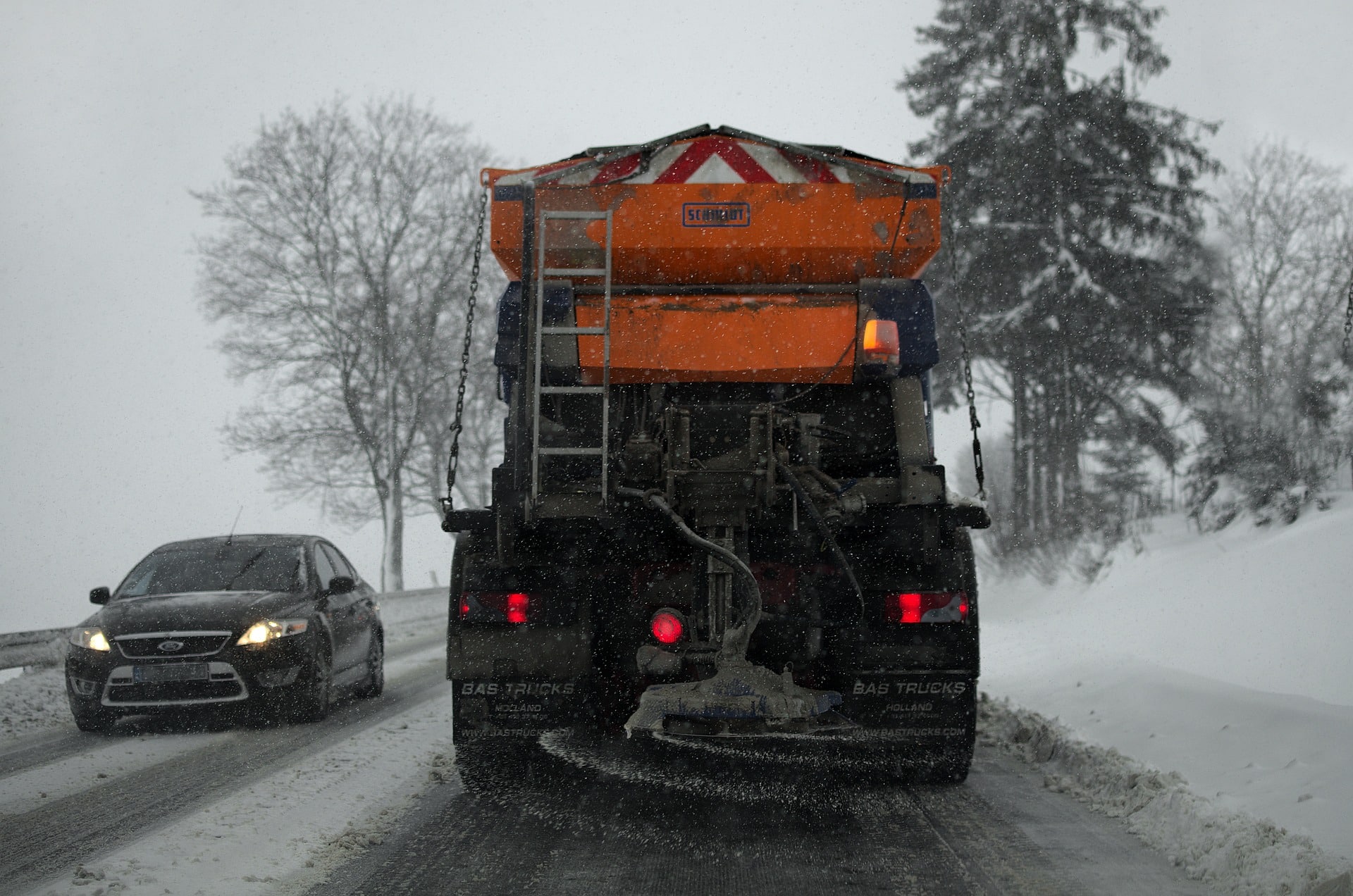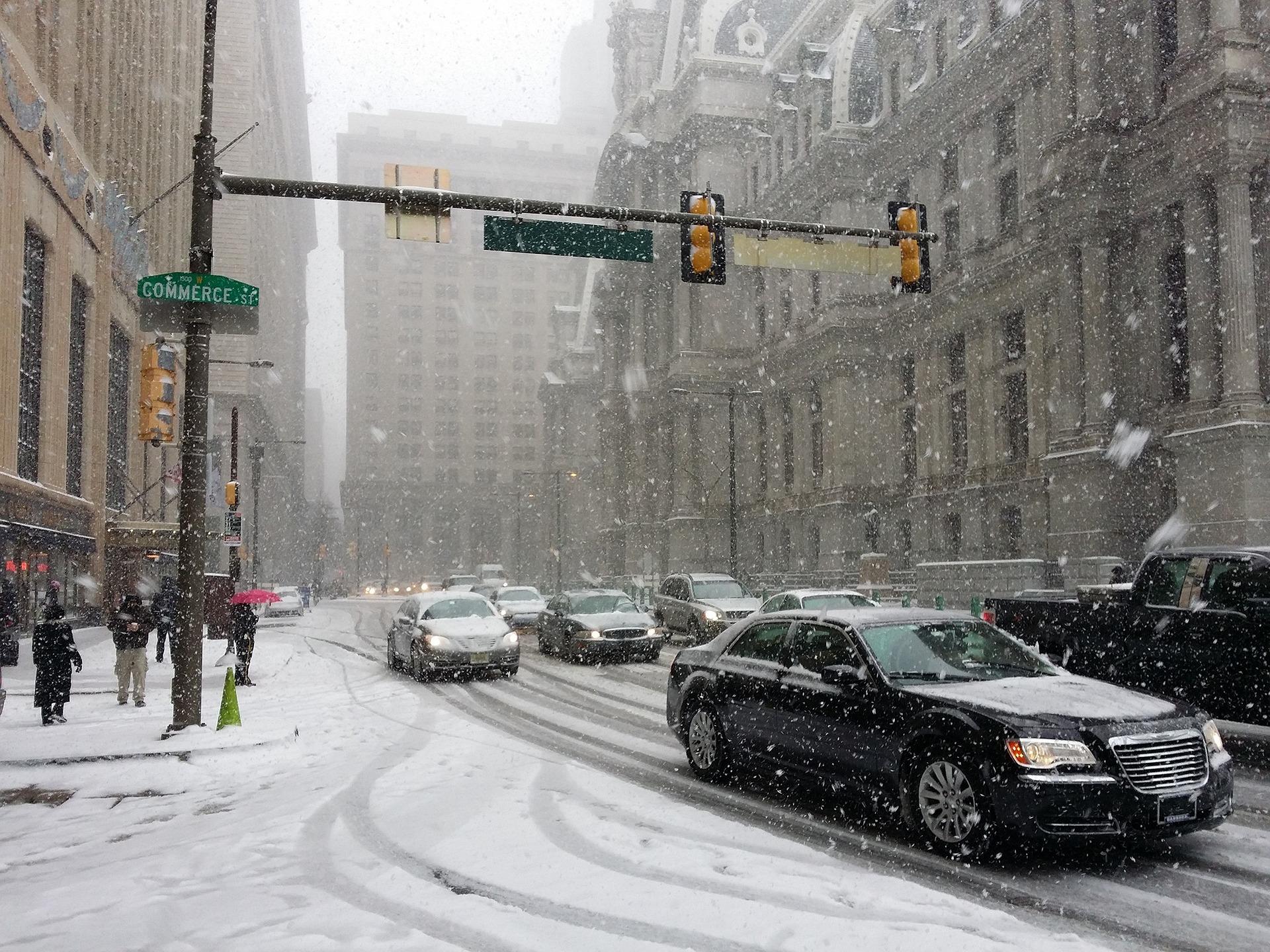
In the northeastern United States, winter turns the terrain into a white wonderland. However, cold conditions that bring ice and snow are not so magical when you drive in them. Drivers in our part of the country are thankful for road salt and salt brine, a mixture of salt and water that will keep the ice and snow from sticking to road surfaces, but it isn’t without consequences. The downside is that it leads to salt damage to cars.
Here’s how to find salt damage on your car and prevent it in the future as you take to the roads during the coldest months of the year.
What Does Road Salt Do?
Road salt is a form of sodium chloride and a rather corrosive compound. Salt brine is a solution of salt and water with a freezing point below water. As such, salt brine can decrease the adhesion of ice to roads.
During the winter, snowplow workers use road salts and salt brine to melt the ice and snow and keep the ice from adhering to highways and streets. Since salt lowers the freezing point of water, it ensures ice can melt even below 32 °F. A major reason that cities use these products is due to affordability. It’s also a straightforward way to keep the roads safe for driving.
Road salts get used when winter conditions become more severe, such as snowstorms, or when the temperatures drop steeply and ice starts to form on the ground. In Pennsylvania, snowplow workers used an average of 12.6 million gallons of salt brine last winter and 801,453 tons of road salt during the previous five winters.
Statewide, more than 2,000 plow trucks and 452 rental trucks remove the snow and ice from the roads. The state government used an average of $271 million over the last five winters to remove snow and ice.
While rock salt is inexpensive to de-ice the roads and make travel safer, it also leads to damage. Road salts can damage infrastructures like bridges, freshwater areas, and roadways. Road salts can also harm the bare metal of cars. It may remove the car’s paint and expose the vehicle’s undercarriage to the elements, leading to rust, damage, and other cosmetic damage.
How Does Road Salt Damage a Car?
Road salts cause chemical reactions when they interact with your car. These chemical reactions corrode the paint and exterior of your vehicle. Since salt is a corrosive substance, it speeds up rust formation on metals. That’s why salt can make your car’s surfaces rusty.
Road salt damage is not just about looks, either. Your car’s brake lines and fuel lines are most at risk of rust and corrosion when exposed to salt brine and salts. Since these parts are located underneath the vehicle, they’re the closest to the roads and the salts on the ground and have the greatest likelihood of salt damage. Long-term exposure of your vehicle’s undercarriage to ice and salt may impact the safety of your car.
How to Spot Salt Damage to Your Car
Salt damage first appears on the vehicle’s flat body panels like the trunk, roof, or hood of the car. Since the top parts of a vehicle receive the most sunlight and provide an area for salt to accumulate, they’re more likely to see the damage.
Pay attention to the body panels to see if there is fading paint or corrosion. Also, check out the undercarriage, the inside of your trunk, underneath the hood, and the wheel wells. Any bubbles in your paint may also indicate salt damage.
What should you do if you notice salt damage on your car? You’ll need to move quickly to fix the problem. You should make an appointment with AODetail immediately. We can help repair salt damage to your car, as well as help protect it from future damage.
How to Prevent Damage from Road Salt
AODetail can help prevent damage from road salt by applying automotive coating systems such as Ceramic Pro. This coating will prevent salt, water, moisture, and other elements from damaging your vehicle’s exterior. In addition to ceramic coatings, paint protection film will provide an added layer of protection from salt damage on your vehicle. Some other tips for preventing road salt damage include:
-
- You should wash your car regularly (including the undercarriage) to remove salts and other substances. After a car wash, apply a layer of wax to protect the car’s surfaces and prevent road salt damage. Have us touchup any chipped paint to avoid rust formation as well.
- Put your vehicle in a garage on sunny days after a particularly icy or snowy storm. This will limit the sunlight the car receives and reduce the risks associated with salt kicked up in the air from those driving in the area.
Want to Protect Your Car from Road Salts? Contact Us Today!
AODetail provides paint protection, protective coatings, and paint correction services to keep your vehicle looking as good as you bought it, even in winter. We can help protect your car from road salts as you traverse winter weather. Contact AODetail today to schedule service and keep your vehicle looking fresh throughout the year.



